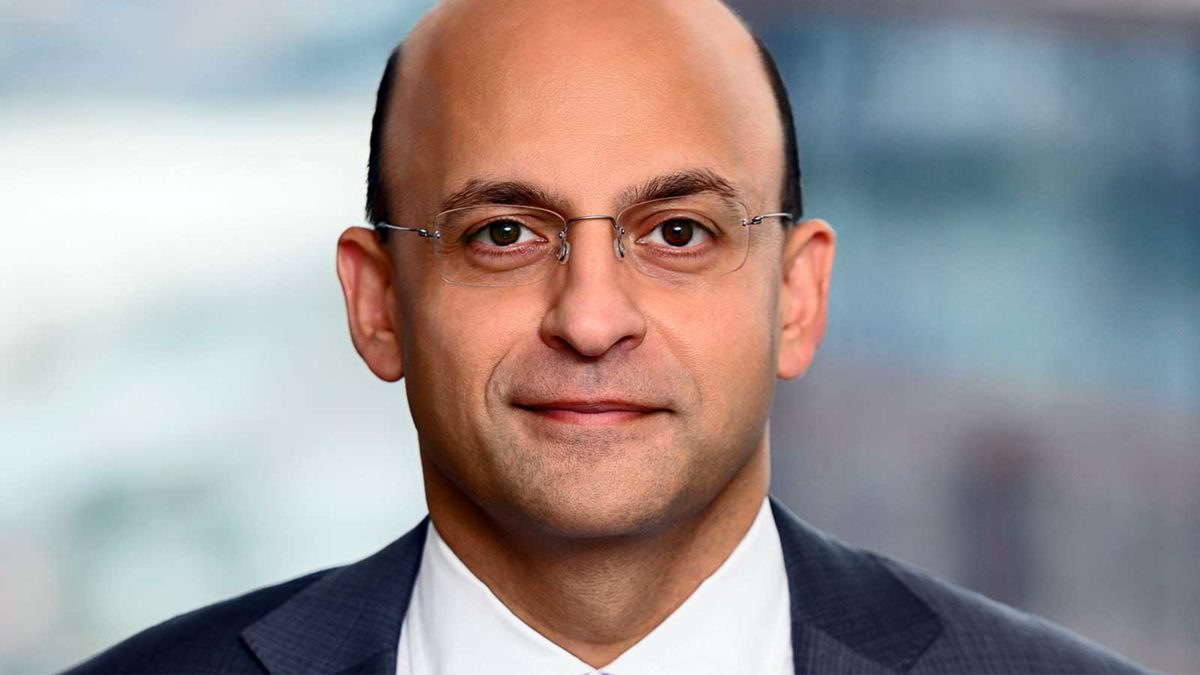Why the future of disruption is ‘weightless’
The new players in any market are smaller, faster, and (sometimes) better. But that doesn’t mean they can’t be dragged back down to the earth.
Disruption is hard to take. It’s not for no reason that Luddites smashed up textile machinery (history has not been as kind to them as it perhaps could have, given that displacement of workers by automation is now a growing economic concern). But disruption is also inevitable. And while the services industry has enjoyed two decades of business as usual, nothing lasts forever.
“Advances in technologies such as cloud computing, artificial intelligence and machine learning are radically reshaping winners and losers across the service sector in both developed and emerging markets – and at an even faster pace after the COVID-19 pandemic,” said Taimur Hyat (pictured above), chief operating officer of PGIM, in the introduction to its latest Megatrends Report.
“This technology transformation will allow new entrants to disrupt key components of the services value chain. At the same time – and to a greater extent than in manufacturing and retail – a select group of technology-forward incumbents will benefit from some unique features of the services sector (such as client acquisition costs and regulatory complexity) to survive, and even thrive, during the process of creative destruction ahead of us.”
One area of the services economy that PGIM believes is particularly ripe for disruption is financials – especially the neobanks, which are mostly free of brick and mortar and exist only on the cloud. The neobanks are held to different regulatory standards, and are what PGIM describes as “weightless” – they have no legacy mainframe systems, branches, or paper statements, and so customer acquisition is substantially simpler.
“Neobanks are beginning to evolve in one of two ways. Many are starting to take a highly segmented approach for broadly underbanked or disengaged communities,” the report reads. “A neobank with a focus on a niche community or affinity group with common needs can customize marketing and services and deliver more efficient client acquisition – albeit in a narrow segment of the market.
“Alternatively, major retailers are beginning to explore their own neobanking services, leveraging their large customer base and distribution network to rapidly scale. Walmart soon plans to launch Hazel by Walmart, a fintech platform that offers customers everything from credit cards to portfolio analysis to virtual currency transaction processing services.”
But with disruption inevitably comes regulation – yin and yang. That’s been true of other services like Uber, which has attempted to use its multi-billion-dollar Silicon Valley war chest to banish taxis from cities but is now bogged down globally by waves of regulation (and still isn’t profitable). PGIM believes that investors overlook “the unsettled regulatory environment in which today’s emerging tech firms operate” – and points to China’s crackdown as a clear cut example.
The neobanks, which have struggled to gain market share in countries where the vast majority of citizens are banked, are hardly assured of success. And while they aren’t always subject to the same capital requirements as incumbents, that might not always be the case.
“This regulatory asymmetry is a key element of their business strategy, but as the neobanks grow, some of their regulatory burden will become more like large commercial banks,” the report reads.
“It may no longer be economically viable for neobanks to target their main customer base – underbanked and disengaged consumers. Furthermore, regulators may justify a light touch on these players so long as they broaden access to financial services. But that tolerance is not assured going forward and can easily shift.”
And the incumbents aren’t sitting still either. In Australia, CBA has been particularly forward thinking, making attempts to meet rising demand for buy now pay later products and launching its own fintech incubator. And there’s the fact that the incumbents and the upstarts aren’t always competing for the same customers.
“Neobanks are making gains mostly among underbanked and disengaged customers that large incumbent banks are unable to profitably serve,” the report reads. “Furthermore, lending to less-than-prime consumers and businesses comes with heavy capital charges for highly regulated incumbent banks and scrutiny from fair lending advocates. Consequently, in the US and Europe, large banks have mostly ceded this segment of the market.”
Which isn’t to say that some of those fuddy old banks aren’t ripe for disruption – just that it’s going to be harder than everybody seems to think.











